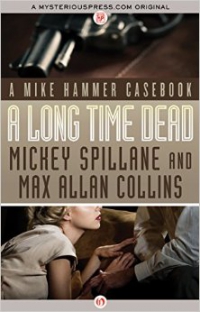The Coming by Joe Haldeman
 Monday, November 21, 2016 at 10:11AM
Monday, November 21, 2016 at 10:11AM 
First published in 2000; published digitally by Open Road Media on September 27, 2016
The Coming is a light novel. More comedy than drama, the story is notable for the amusing cast of characters Joe Haldeman assembles against a backdrop of alien visitation. Haldeman gives a nod to James Gunn’s science fiction novel, The Listeners, as his inspiration for The Coming. The stories are quite different, but the form is similar, in that each book explores the impact of an alien message on a variety of different characters.
A common theme of science fiction, present in The Coming, is that scientists make better decisions than politicians. That might be true, given some of the stupidity that comes out of Washington, but nobody elects scientists. One serious point in this otherwise light-hearted novel is that politicians who convene a panel of science advisors should probably heed the advice they receive.
Something is approaching the Earth at nearly the speed of light, but it’s slowing down. It should arrive in three months, on New Year’s Day. It sent a message -- “WE’RE COMING” -- that isn’t particularly helpful, but it does get the attention of the media, thanks to the astronomer, Aurora Bell, who first decodes the message.
From that premise, the story branches off in a multitude of directions. The Coming is a free-wheeling novel. It consists of short chapters, each focusing on a specific character, many of whom make only a few brief appearances. A primary storyline involves a blackmail scheme that is only tangentially related to the first contact story. More directly tied to the main plot is a president whose first instinct is “If we don’t understand them, we should kill them.”
The thread that binds the characters is their speculation about the intent of the approaching aliens. Haldeman writes convincingly of people who perceive everything as a threat, and add aliens to the list; people who perceive everything in religious terms, and expect the aliens to be messengers from a deity (perhaps coming to smite the unholy); people who view it as a hoax because they don’t believe anything that comes from the government or the news media; and people who view a visit from aliens as a chance to make a fast buck. Occasionally a scientist comes along who refuses to base an opinion on speculation rather than fact.
I like the novel’s future-building. Haldeman envisions a future in which America (and the English language) is strongly influenced by Latino culture, university students make high tech porn, homosexuality has been outlawed (again), and addicts use genetically-programmed designer drugs. The Coming was first published in 2000, so predictions of the future seem dated in only a couple of respects.
Dialog is strong and often quite funny. After the buildup of alien visitation, the ending seems too abrupt. It’s clever, but if this were a more serious novel, I would find the ending disappointing. I don’t demand a dramatic or meaningful conclusion from light fiction, so my disappointment was mitigated by the fact that the novel as a whole is amusing and enjoyable. It’s more a reflection of silly attitudes in contemporary American society than a science fiction novel, but that’s fine for open-minded readers who thinks science fiction doesn’t need to consist exclusively of space opera.
RECOMMENDED


